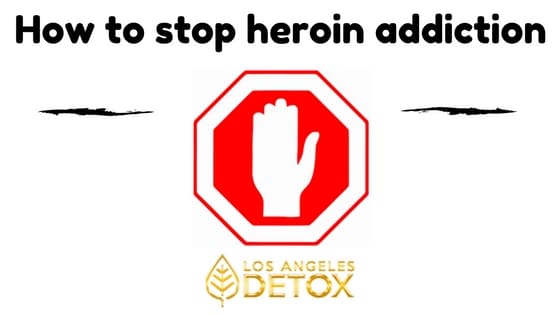Other questions answered in this article on heroin addiction:
- How to help a heroin addict?
- How long does it take to detox from heroin?
- How long does heroin withdrawal last cold turkey?
- How long does heroin withdrawal last?
- How to treat heroin addiction?
- What is used to treat heroin addiction?
- Where to get help for heroin addiction?
Heroin is a narcotic that affects the reward system of the brain and causes a number of withdrawal symptoms when you stop or cut back after heavy or consistent use. The effects associated with heroin are similar to other opioids and painkillers like oxycodone and hydrocodone, although more intense. Withdrawal is common and often extremely uncomfortable which leads to further abuse to avoid the symptoms.
Other narcotics include:
- Codeine
- Hydrocodone (Vicodin)
- Hydromorphone (Dilaudid)
- Methadone
- Meperidine (Demerol)
- Morphine
- Oxycodone (Percocet or Oxycontin)
Causes
Physical dependence plays a very large role in the opioid addiction epidemic and subsequent withdrawals. Over time tolerance is built, which means more and more of the drug will be needed to produce the same effects as previous doses. Eventually the individual relies on the drug predominantly to prevent withdrawal symptoms, known as physical dependence. How long it takes to become physically dependent depends on many factors like method of use, dosing, and the individual.
Symptoms and Duration
Withdrawal symptoms usually begin within 12 hours of the last dose. Heroin withdrawals are similar to those of other opiates and narcotic painkillers, though because of heroin’s rapid onset, the emergence of withdrawals comes sooner.
Going through heroin withdrawals often feels similar to a terrible case of the flu. Symptoms usually peak during the second or third day and the discomfort typically subsides after about a week or so. These symptoms can be agonizing and painful but are not typically life-threatening.
The dosages and period of time over which the abuse occurs influence how long withdrawals last. Aside from acute withdrawals, the effects of heroin on mood and behavior are vast and can last months after sobriety begins because of the changes in chemical makeup of the brain due to heroin abuse. Depression, anxiety, fatigue, and insomnia are some possible symptoms of post-acute withdrawal syndrome, or PAWS.
Common early withdrawal symptoms include:
- Agitation
- Anxiety
- Sweating
- Yawning
- Runny nose and/or tearing eyes
- Muscle aches
- Insomnia
Common withdrawal symptoms that may appear later include:
- Nausea and vomiting
- Insomnia
- Diarrhea
- Dilated pupils
- Abdominal cramping
- Goosebumps
Heroin Detox
Supervised heroin detox is necessary to provide a safe environment to manage withdrawal symptoms. Although the common symptoms are not life-threatening on their own, complications can arise and cause harm to the person. Dehydration, electrolyte imbalances, and asphyxiation caused by vomiting are just a few possible complications.
Psychological withdrawal symptoms are also monitored in a detox facility. Supervised detox is always recommended to prevent self-harm, relapse, and manage symptoms like anxiety and depression.
Treatment and Medication
Withdrawal from heroin and other opiates on your own is difficult and can be dangerous. Professional treatment will help you through this process by providing therapy and counseling, medicine to ease withdrawals and curb cravings, and other means of support. There are many options and programs available to suit your needs.
Some common medications used in heroin detox are:
Methadone is used to help taper patients off of heroin and prevent withdrawal symptoms as well as treatment for long-term abstinence maintenance. Doses of methadone are usually decreased over time.
Buprenorphine (Subutex) is one of the most commonly used drug for heroin withdrawal. It can shorten the length of detox as well as be used for long-term maintenance like methadone. Buprenorphine reduces cravings and symptoms like muscle aches and vomiting. Buprenorphine may be combined with other drugs, like Naloxone, to help prevent misuse.
Naltrexone reduces heroin cravings by blocking opioid receptors in the brain and is available in both pill and injection form.
Clonidine is used to manage a range of withdrawal symptoms but does not reduce cravings.
Complications
The biggest complication is relapse. Relapse after detox is especially dangerous because the user often does not realize how much their tolerance has lowered during their period of abstinence. Most opiate overdoses take place soon after detox.
Vomiting can create complications if stomach contents are accidentally inhaled, which can cause respiratory infections. Additionally, vomiting and diarrhea can cause dehydration and electrolyte imbalances.







